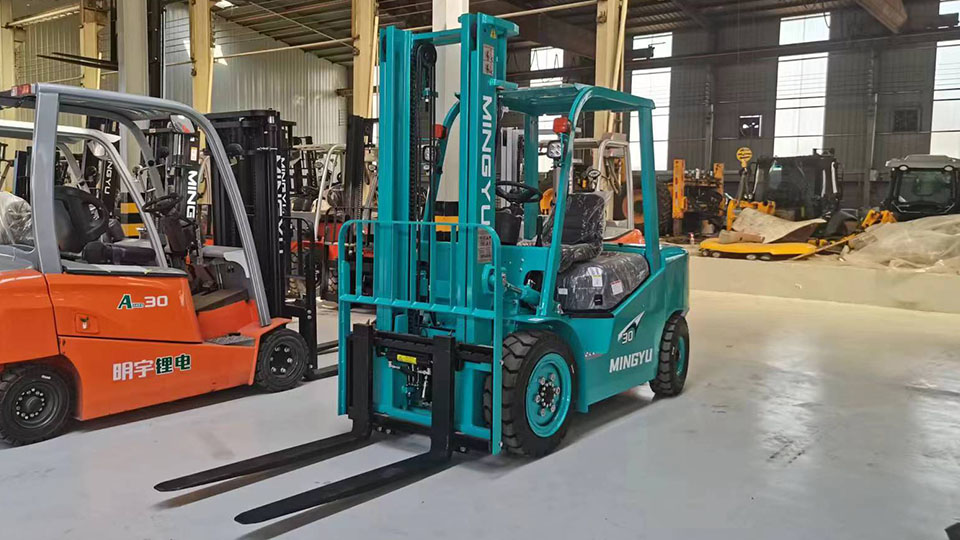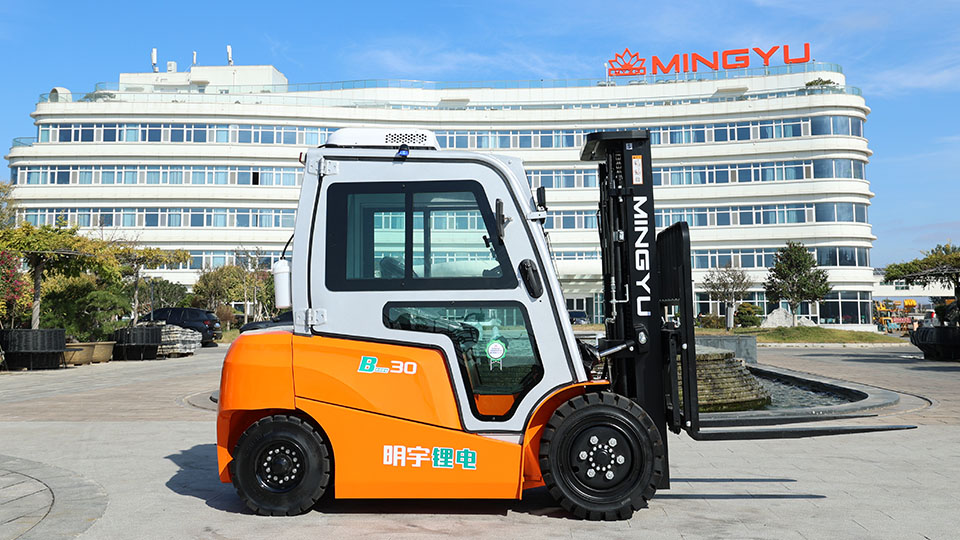
Forklifts are the workhorses of warehouses, construction sites, and distribution centers. For many businesses, the question isn't whether they need a forklift, but how they should acquire one. Buying new or used is an option, but for a great number of companies, leasing a forklift is the most attractive and financially viable solution. Leasing offers flexibility, predictable costs, and access to the latest equipment without the large upfront capital expenditure of a purchase.
However, the cost of a forklift lease is not a one-size-fits-all figure. It's a complex calculation influenced by a multitude of factors, from the type of equipment to the terms of the agreement. This comprehensive article will delve into the nuances of forklift leasing costs, providing a detailed breakdown of what you can expect to pay, the variables that affect the price, and a cost-benefit analysis to help you decide if leasing is the right option for your business.

Understanding the Base Costs: A General Overview
Before diving into the specifics, it's helpful to establish a baseline for what you can expect to pay. A common rule of thumb is that a monthly lease payment is roughly $20 for every $1,000 of the forklift's purchase price. So, if a new forklift costs $25,000, you could expect to pay around $500 per month. This is a simplified estimate, and the actual cost will vary based on the factors we'll explore below.
Here's a general range for monthly lease payments based on the forklift's value:
For a $25,000 forklift: $375 - $500 per month
For a $50,000 forklift: $600 - $950 per month
For a $75,000+ forklift: $1,000+ per month
It's important to differentiate between leasing and renting. While the terms are sometimes used interchangeably, they represent two distinct acquisition methods.
Leasing is a long-term contract, typically for a period of one to five years, with a fixed monthly payment.
Renting is a short-term solution, usually on a daily, weekly, or monthly basis, for temporary needs.
Rental costs are significantly higher on a per-day basis due to their short-term nature and can range from $150 to $300 per day for a standard warehouse forklift. This article focuses primarily on long-term leasing.
Factors That Influence Forklift Lease Costs
The base cost is just the beginning. The final monthly payment is determined by a combination of key variables that a leasing company will evaluate before finalizing a contract.
1. Forklift Type and Specifications
The single most significant factor in determining the lease cost is the forklift itself. Different types of forklifts are designed for different applications, and their complexity, power source, and capacity directly impact their value.
Internal Combustion (IC) Forklifts (LPG, Diesel, Gasoline): These are powerful workhorses, often used outdoors or in well-ventilated indoor spaces. They are typically more expensive than their electric counterparts due to their complex engines and robust construction. A heavy-duty, pneumatic-tire diesel forklift for a construction site will have a higher lease cost than a standard propane forklift for a warehouse.

Electric Forklifts: Ideal for indoor use, electric forklifts are quiet, emission-free, and require less maintenance. However, the upfront cost of the battery and charger can be substantial. The cost of a lease for an electric forklift will include the price of the battery and a charger, which are often priced separately.
Specialty Forklifts: Narrow-aisle forklifts (like reach trucks and turret trucks), order pickers, and rough-terrain forklifts are highly specialized machines. Their unique capabilities and more complex designs command a higher price and, as a result, a higher lease payment.
Load Capacity and Lift Height: The higher the lifting capacity and lift height, the more expensive the forklift. A 15,000-lb capacity forklift will cost significantly more to lease than a standard 5,000-lb model.
2. Lease Term and Contract Type
The length of the lease agreement and the type of lease you choose will have a major impact on your monthly payment.
Lease Term: A longer lease term, such as a five-year contract, will generally result in a lower monthly payment than a shorter three-year lease. This is because the leasing company can spread the cost of the equipment over a longer period.
Operating Lease (True Lease): This is the most common type of forklift lease. With an operating lease, the lessee (your company) is effectively renting the equipment for a fixed term. The leasing company retains ownership and is responsible for the residual value of the forklift at the end of the term. Payments are typically considered an operational expense and can be tax-deductible. This is a popular choice for businesses that want to keep their fleet updated with the latest technology.
Capital Lease (Finance Lease): A capital lease is more akin to a loan. The lessee takes on the responsibility of ownership, and the forklift appears as an asset on the company's balance sheet. At the end of the term, the lessee often has the option to purchase the equipment for a nominal fee (e.g., $1 buyout). The monthly payments are higher than an operating lease because they are designed to cover the full value of the equipment over the term.
3. Maintenance and Service Plans
One of the most attractive aspects of leasing is the potential to include maintenance and service in the lease agreement. This provides predictable budgeting and peace of mind, but it also adds to the monthly cost.
Full Maintenance Lease: This is the most comprehensive option. The leasing company is responsible for all scheduled maintenance, repairs, and even replacement of parts due to normal wear and tear. This is an excellent option for businesses that don't have an in-house maintenance team or want to avoid unexpected repair costs.
Scheduled Maintenance Only: Some leases may only include planned maintenance, such as routine fluid and filter changes. Any other repairs would be the responsibility of the lessee.
No Maintenance: The lowest-cost option, but the lessee is responsible for all maintenance and repairs. This can lead to unexpected and potentially high costs for major repairs, making the overall cost less predictable.
4. Usage and Hour Meter Limits
Lease agreements often include a specified number of allowed operating hours per year. This is a crucial factor in determining the cost.
High-Usage Operations: If you run multiple shifts or have a heavy-duty application, your forklift may accumulate more hours than the lease agreement allows. Exceeding the hour limit can result in overage fees, which can be significant (e.g., $5 to $15 per hour over the limit).
Low-Usage Operations: If your forklift sees limited use, you might be able to negotiate a lower monthly payment by agreeing to a lower annual hour limit.
5. Business and Credit History
Just like with any loan or financing, the leasing company will evaluate your company's financial health. A strong credit history and a long-standing business will often qualify for better rates. New businesses or those with a shaky financial past may face higher interest rates or be required to put down a larger security deposit.
Leasing vs. Buying: A Cost-Benefit Analysis
Deciding whether to lease or buy a forklift is a major financial decision. There is no universally "correct" choice; it depends entirely on your business's specific needs and financial position.
When Leasing is the Right Choice:
Lower Upfront Cost: Leasing requires little to no down payment, preserving working capital for other business investments.
Predictable Budgeting: Fixed monthly payments, especially with a full maintenance plan, make it easy to budget for equipment costs and avoid unexpected repair bills.
Access to the Latest Technology: Leasing allows you to regularly upgrade your equipment every few years, ensuring you always have the most efficient, safest, and technologically advanced forklifts.
Tax Benefits: Lease payments are often fully deductible as an operational expense, which can provide a significant tax advantage. (Consult a tax professional for specific advice).
Avoids Depreciation and Resale Risk: You don't have to worry about the forklift's declining value or the hassle of selling it at the end of its useful life.
When Buying is the Right Choice:
Lower Long-Term Cost: For a forklift that will be used for a long time (7-10 years or more) and in a low-use, non-demanding application, the total cost of ownership is often lower than the cumulative cost of leasing.
Asset Ownership: The forklift becomes a business asset that can be leveraged, sold, or used as collateral.
No Usage Restrictions: You can use the forklift for as many hours as you need without incurring overage fee
Customization: When you buy a forklift, you can customize it with specific attachments or features without the limitations of a standard lease model.
Depreciation and Tax Advantages: While lease payments are deductible, ownership allows for depreciation deductions and other tax incentives, which can be beneficial for some businesses.
Conclusion
Leasing a forklift is an excellent solution for many businesses, providing a flexible and financially sound way to acquire essential equipment. The cost is not a single number but a dynamic figure influenced by the forklift's type, the lease's duration, the chosen maintenance plan, and the business's financial standing.
The average monthly lease payment for a standard forklift can range from $375 to over $1,000, but this is just a starting point. To get an accurate quote, it's essential to work with a reputable dealer who can analyze your specific operational needs. By carefully considering all the factors discussed in this article, you can make an informed decision that aligns with your business goals and helps your operation run smoothly and efficiently for years to come.
Name: selena
Mobile:+86-13176910558
Tel:+86-0535-2090977
Whatsapp:8613181602336
Email:vip@mingyuforklift.com
Add:Xiaqiu Town, Laizhou, Yantai City, Shandong Province, China